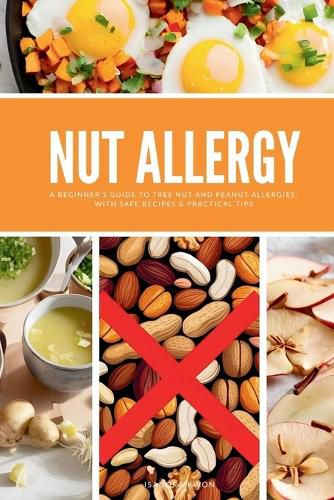Readings Newsletter
Become a Readings Member to make your shopping experience even easier.
Sign in or sign up for free!
You’re not far away from qualifying for FREE standard shipping within Australia
You’ve qualified for FREE standard shipping within Australia
The cart is loading…






This title is printed to order. This book may have been self-published. If so, we cannot guarantee the quality of the content. In the main most books will have gone through the editing process however some may not. We therefore suggest that you be aware of this before ordering this book. If in doubt check either the author or publisher’s details as we are unable to accept any returns unless they are faulty. Please contact us if you have any questions.
Nut allergies are one of the most common food allergies, affecting millions of people around the world. These allergies occur when the immune system reacts to proteins found in certain nuts, such as peanuts or tree nuts like almonds, walnuts, and cashews. Even a small amount of these proteins can trigger allergic reactions in some individuals. These reactions vary in severity, ranging from mild symptoms like itching or hives to more serious effects, such as difficulty breathing or anaphylaxis.
The prevalence of nut allergies seems to have increased over the years, particularly among children. Research indicates that millions of people worldwide deal with these allergies, with cases often being diagnosed in early childhood. However, nut allergies can also develop later in life. Experts have studied this rise closely, though the exact reasons remain unclear. Changes in dietary habits, genetic factors, and environmental influences are some areas researchers examine.
Nut allergies require attention because they can have significant impacts on daily life. People with these allergies often need to carefully check food labels, avoid certain dishes, and stay prepared for potential allergic reactions.
Even trace amounts of nut proteins in food can pose risks for some individuals. Understanding nut allergies is not only important for those affected but also for others, including friends, family, and caregivers who prepare meals or share spaces with someone who has an allergy.
In this guide, we will talk about the following:
What is Nut Allergy?
Difference Between Food Intolerance and True Allergy
Hidden Sources of Nut Allergens
Who is at Risk?
Causes, Symptoms, and Diagnosis
Recognizing Anaphylaxis
Using an Epinephrine Auto-Injector (EpiPen)
Living Safely with a Nut Allergy
Nut-Free Diet & Alternatives
Nut-Free Sample Recipes
Nut Allergies in Children & Social Settings
Keep reading to learn more about nut allergies and how you can manage them for a safe, healthy lifestyle. By the end, you will have a better understanding of nut allergies and the tools to navigate them confidently.
$9.00 standard shipping within Australia
FREE standard shipping within Australia for orders over $100.00
Express & International shipping calculated at checkout
This title is printed to order. This book may have been self-published. If so, we cannot guarantee the quality of the content. In the main most books will have gone through the editing process however some may not. We therefore suggest that you be aware of this before ordering this book. If in doubt check either the author or publisher’s details as we are unable to accept any returns unless they are faulty. Please contact us if you have any questions.
Nut allergies are one of the most common food allergies, affecting millions of people around the world. These allergies occur when the immune system reacts to proteins found in certain nuts, such as peanuts or tree nuts like almonds, walnuts, and cashews. Even a small amount of these proteins can trigger allergic reactions in some individuals. These reactions vary in severity, ranging from mild symptoms like itching or hives to more serious effects, such as difficulty breathing or anaphylaxis.
The prevalence of nut allergies seems to have increased over the years, particularly among children. Research indicates that millions of people worldwide deal with these allergies, with cases often being diagnosed in early childhood. However, nut allergies can also develop later in life. Experts have studied this rise closely, though the exact reasons remain unclear. Changes in dietary habits, genetic factors, and environmental influences are some areas researchers examine.
Nut allergies require attention because they can have significant impacts on daily life. People with these allergies often need to carefully check food labels, avoid certain dishes, and stay prepared for potential allergic reactions.
Even trace amounts of nut proteins in food can pose risks for some individuals. Understanding nut allergies is not only important for those affected but also for others, including friends, family, and caregivers who prepare meals or share spaces with someone who has an allergy.
In this guide, we will talk about the following:
What is Nut Allergy?
Difference Between Food Intolerance and True Allergy
Hidden Sources of Nut Allergens
Who is at Risk?
Causes, Symptoms, and Diagnosis
Recognizing Anaphylaxis
Using an Epinephrine Auto-Injector (EpiPen)
Living Safely with a Nut Allergy
Nut-Free Diet & Alternatives
Nut-Free Sample Recipes
Nut Allergies in Children & Social Settings
Keep reading to learn more about nut allergies and how you can manage them for a safe, healthy lifestyle. By the end, you will have a better understanding of nut allergies and the tools to navigate them confidently.